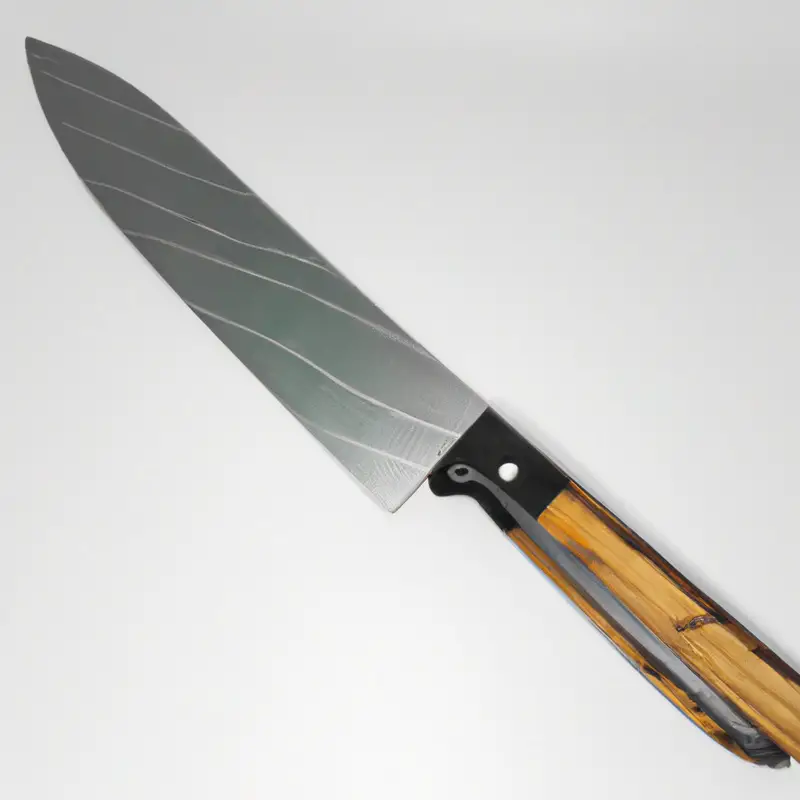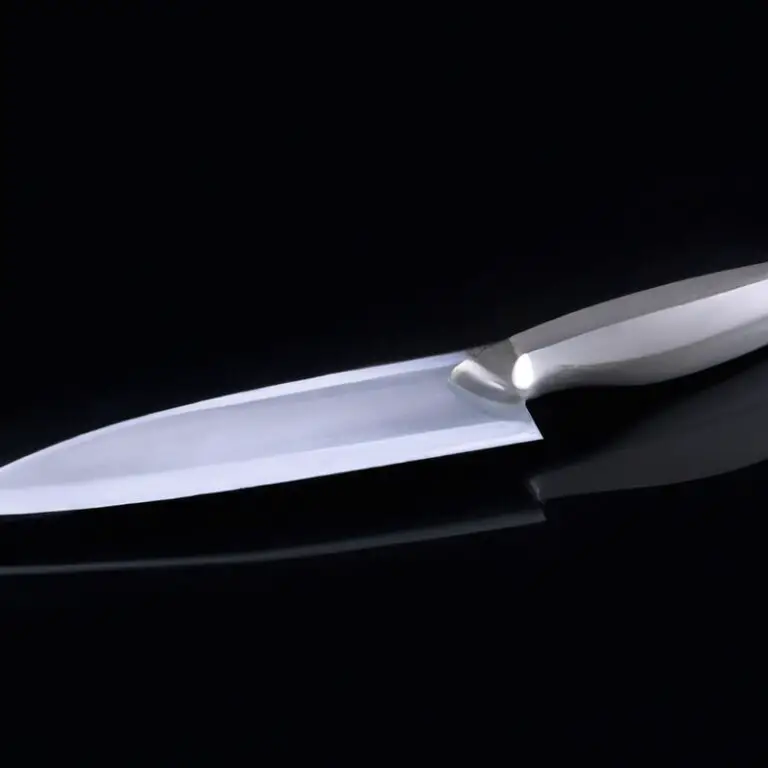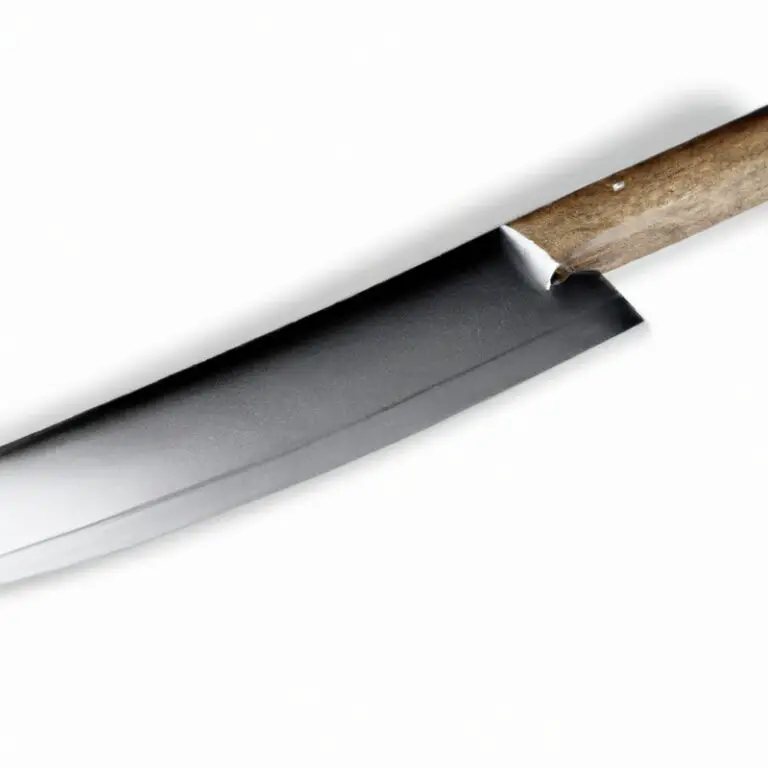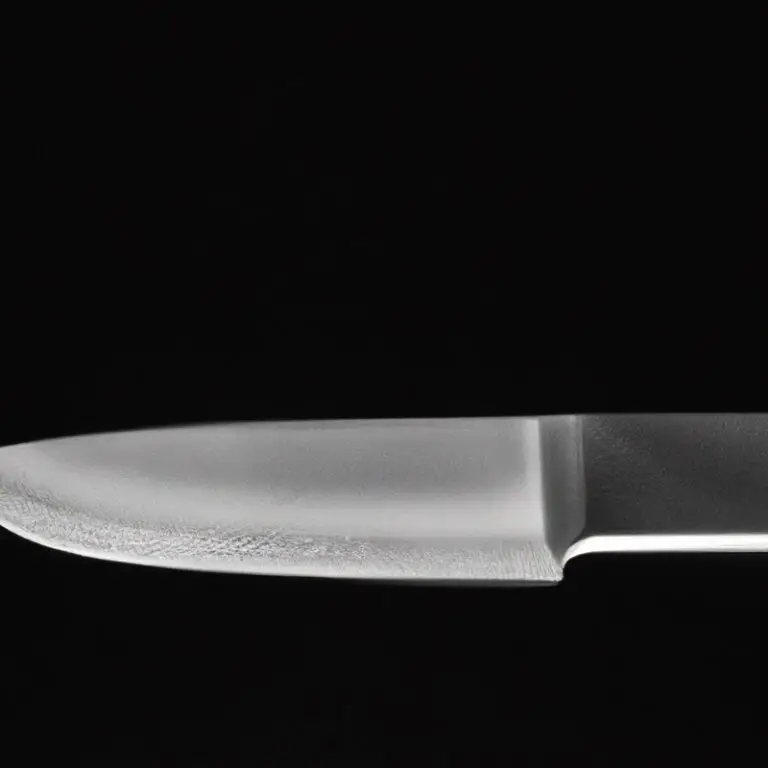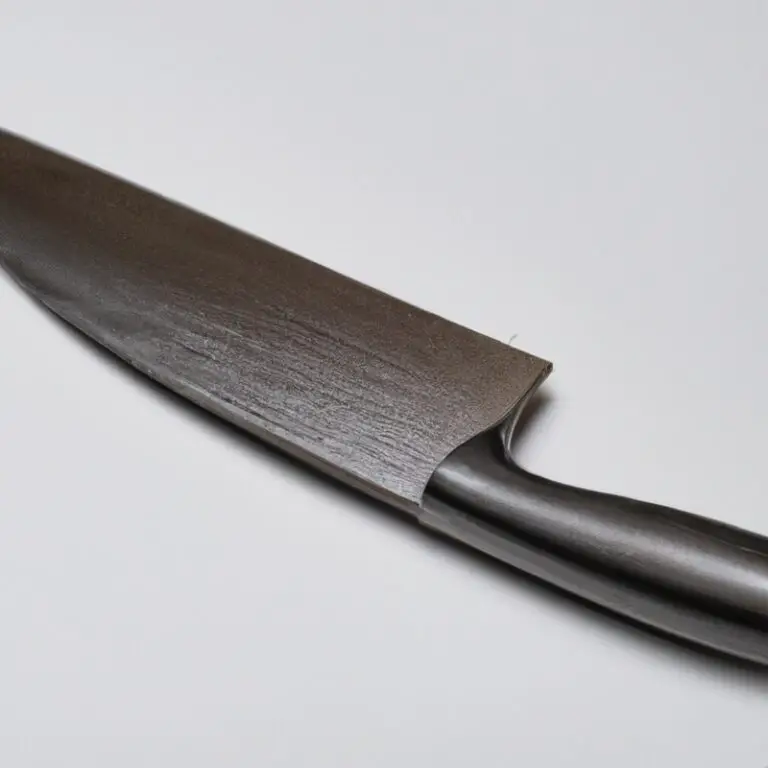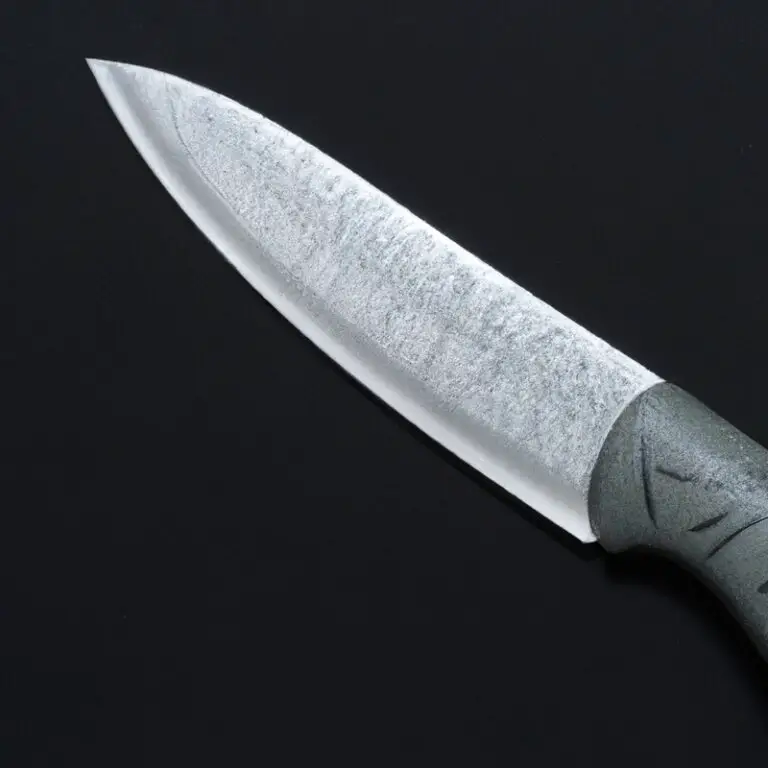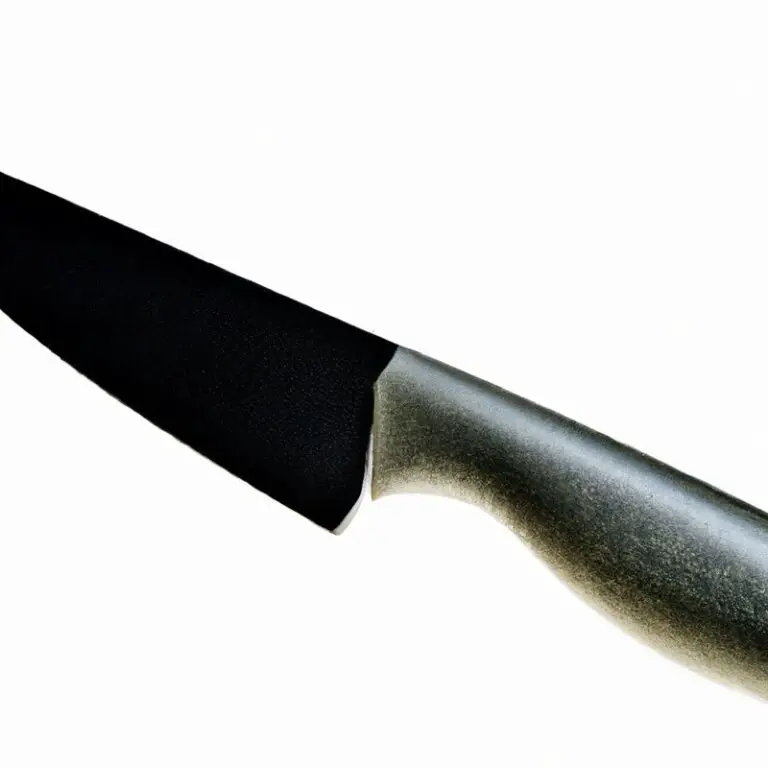What Are The Recommended Angles For Sharpening a Gyuto Knife? Mastering The Blade
Key Takeaways:
- The ideal sharpening angle for a Gyuto knife is between 15 and 20 degrees to ensure sharpness and durability.
- Sharpening at a lower angle may lead to a sharper edge, but the blade can become brittle and prone to damage.
- Always use a sharpening stone or honing rod to avoid damaging the blade’s edge when sharpening.
- Sharpen the blade regularly, taking care to maintain the same angle on both sides to ensure even sharpening.
Have you ever struggled with achieving the perfect edge on your Gyuto knife? Look no further because in this article, I’ll be sharing my expertise on the recommended angles for sharpening a Gyuto knife.
Knowing the anatomy of the Gyuto knife edge and the importance of proper angles during sharpening is crucial for achieving precise cuts.
From common sharpening tools to tips on identifying the optimal angle, this guide will equip you with the knowledge to maintain your knife’s edge like a pro.
| Angle (degrees) | Resulting Sharpness |
|---|---|
| 15 | Very sharp, but delicate edge. Best for tasks that require high precision, such as filleting fish or trimming vegetables. |
| 20 | Sharp and durable edge. Suitable for most tasks, including chopping, slicing, and dicing. |
| 25 | Less sharp, but very durable edge. Ideal for heavy-duty tasks, such as cutting through thick meats and dense vegetables. |
Understanding the Anatomy of a Gyuto Knife Edge
The anatomy of a Gyuto knife edge consists of two primary parts: the bevel and the edge. The bevel is the flat, angled surface that extends from the spine of the knife down to the edge.
The edge is the sharp, thin portion of the blade that is used for cutting.
The angle of the bevel plays a critical role in how the knife performs. Generally, a smaller angle creates a sharper edge that is suitable for delicate tasks such as cutting through soft foods.
On the other hand, a larger angle creates a more robust edge that is better suited for tougher tasks such as chopping meat.
It’s essential to understand the anatomy of a Gyuto knife edge to determine the optimal angle for your particular knife. The angle can be adjusted by sharpening the bevel, which, if done correctly, will sharpen the edge, resulting in a sharper, more efficient blade.
The Importance of Proper Angles in Knife Sharpening
The proper angle is crucial while sharpening a Gyuto knife. It not only determines the sharpness but also the durability and performance of the blade.
The ideal angle varies depending on the type of knife and its intended use.
However, as a general rule, a Gyuto knife’s angle should be between 15-20 degrees per side for optimal sharpness and balance. Using an incorrect angle can result in a dull or damaged blade, rendering the knife useless or even dangerous during use.
Therefore, it is vital to pay attention to the correct angles while sharpening a Gyuto knife to ensure its longevity and efficiency.
Common Sharpening Tools for Gyuto Knives
To sharpen a Gyuto knife, the following tools are commonly used:
- Whetstones: Whetstones are the most popular sharpening tool for gyuto knives. They come in different types and grits, and offer precision and control when sharpening the blade.
- Sharpening rods: Sharpening rods are good for maintaining the blade’s edge, but not ideal for sharpening dull blades. They come in different materials, including diamond, ceramic, and steel.
- Honing steels: Honing steels are used for quick touch-ups, but cannot sharpen a dull blade. They are made of steel or ceramic, and are easy to use.
- Electric sharpeners: Electric sharpeners are convenient and easy to use, but can remove too much metal from the blade if used incorrectly. They come in different types, including belt sanders and grinding wheels.
When choosing a sharpening tool for your Gyuto knife, it is important to consider your level of expertise, the blade’s condition, and the desired outcome. Using the proper tool and technique can help ensure a sharp and durable edge for your Gyuto knife.
How to Identify the Optimal Angle for Your Gyuto Knife
To identify the optimal angle for your Gyuto knife, you need to consider its thickness, intended use, and your personal preference. Thicker blades require higher angles for durability, while thinner blades allow for finer edges with lower angles.
For general purpose use, a 15-20 degree angle is recommended.
However, if you require your Gyuto knife for heavy-duty cutting tasks, a higher angle may be beneficial. Experiment with different angles and sharpening techniques to find what works best for you and your prized kitchen tool.
Important Tips for Maintaining Your Gyuto Knife Edge
Maintaining the edge of your Gyuto knife is crucial in ensuring its longevity. Here are some essential tips to keep in mind:
- Use a honing steel regularly to maintain the knife’s edge between sharpening sessions.
- Avoid using glass cutting boards or surfaces that are too hard as they can damage the edge of your knife. Opt for wooden or plastic cutting boards instead.
- Clean your knife after each use and store it in a safe place to prevent any damage.
- Do not use your Gyuto knife for tasks it’s not intended for, like opening cans or bottles.
- Avoid using the dishwasher to clean your Gyuto knife as the high temperatures can cause damage to the blade. Hand wash the knife with warm soapy water and dry it immediately.
- Sharpen your knife regularly using the recommended angles and techniques to maintain its edge.
Remember, taking care of your Gyuto knife’s edge will keep it sharp and in good condition for years to come.
The Difference Between Honing and Sharpening Your Gyuto Knife
Honing and sharpening are two different processes that play important roles in keeping your Gyuto knife sharp. Honing is the process of realigning the edge of the blade, while sharpening is the process of removing metal to create a new, sharp edge.
Honing is done frequently to keep the blade aligned and in good condition between sharpenings.
It is typically done using a honing steel, which is a long, narrow metal rod that is used to straighten out any slight bends or warping in the blade. Sharpening, on the other hand, is done less frequently and is used to remove metal and create a new, sharp edge on the blade.
This process is typically done using a sharpening stone or an electric knife sharpener.
It’s important to note that honing will not actually sharpen a dull blade, but rather it maintains the sharpness of the blade by realigning the edge. Therefore, it is recommended to hone your Gyuto knife regularly and only sharpen it when necessary, to avoid removing too much metal and shortening the lifespan of the knife.
Pros and Cons of Different Sharpening Methods for Gyuto Knives
Pros and Cons of Different Sharpening Methods for Gyuto Knives: There are several sharpening methods available for Gyuto knives, each with its pros and cons.
- Whetstones – This traditional method offers a range of grits that guarantee razor-sharp cuts. However, it requires skill and practice to prevent over-sharpening or creating uneven edges.
- Honing Rods – These tools help maintain the sharpness of the Gyuto blade by realigning the edge. While easy to use, honing rods cannot sharpen dull knives.
- Electric Sharpeners – They offer convenience and speed, making them ideal for busy kitchens. However, electric sharpeners can sometimes remove too much material, reducing the blade’s lifespan.
- Manual Sharpeners – These tools are compact, affordable, and easy to use. But, they may not provide the same level of sharpness as other methods.
Ultimately, the best sharpening method for your Gyuto knife depends on personal preference, skill level, and the state of the blade. It is recommended to explore multiple sharpening methods and choose the one that works best for your knife and skill set.
How Often Should You Sharpen Your Gyuto Knife?
How often you should sharpen your Gyuto knife depends on how frequently you use it and the level of maintenance you provide after each use. In general, professional chefs sharpen their knives every day, while home cooks can do it every two weeks.
However, this also varies on the type of knife and its usage.
If you use your Gyuto knife more regularly, it may need sharpening every week or even every few days. Signs that indicate it’s time to sharpen your knife include difficulty in cutting and frequent slipping off surfaces.
Remember that a sharp knife is safer and more efficient than a dull blade.
Therefore, maintaining your Gyuto knife at its optimal level should be a top priority.
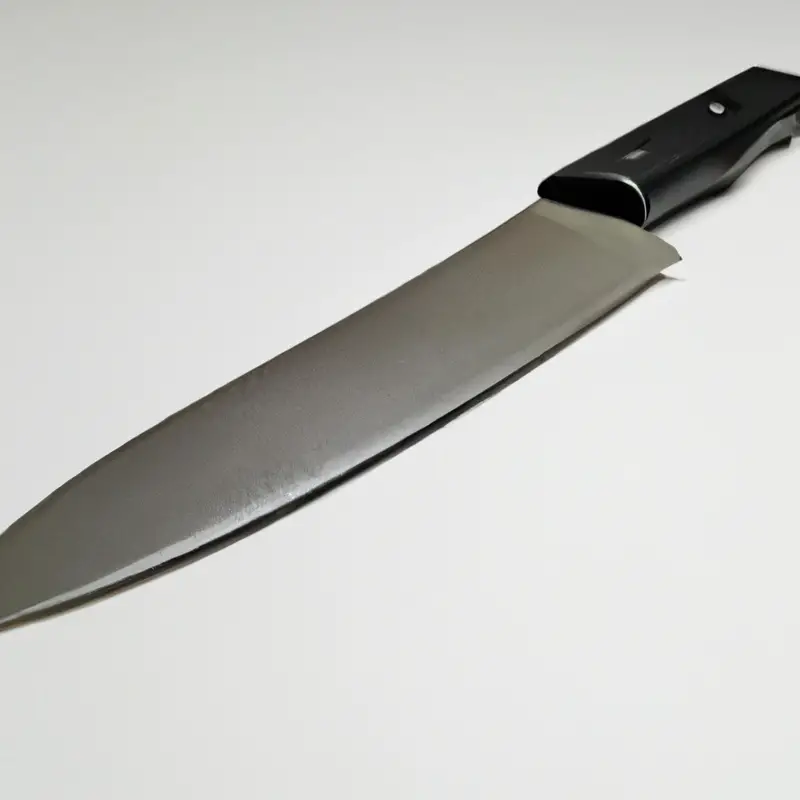
Common Mistakes to Avoid When Sharpening Your Gyuto Knife
When it comes to sharpening your Gyuto knife, there are several common mistakes you should avoid to maintain its optimal sharpness. Firstly, avoid using a sharpening tool that is too aggressive for your knife, as it can lead to over-sharpening and a shorter lifespan for your blade.
Secondly, it is important not to rush the sharpening process, as doing so can lead to uneven results and inconsistent sharpness.
thirdly, avoid sharpening at an incorrect angle, as this can make your knife duller instead of sharpening it. Additionally, it is crucial not to neglect your honing, stropping, and cleaning routine, as this can cause the blade to wear out quickly.
Finally, avoid over-sharpening and removing too much metal, as this can reduce the lifespan of your knife.
By avoiding these common mistakes, you can ensure that your Gyuto knife stays sharp and performs in its optimal condition.
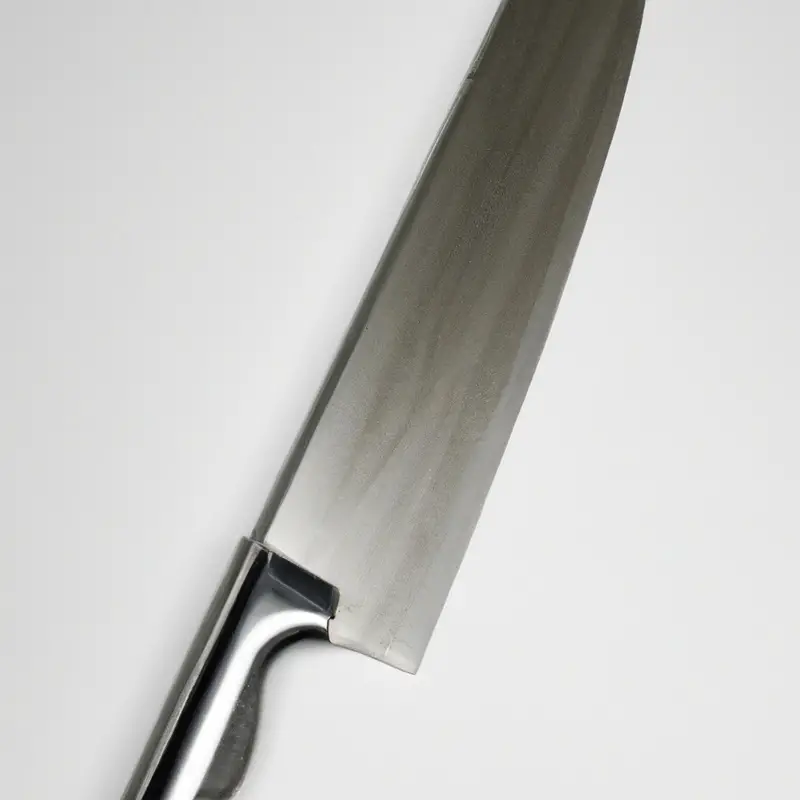
Correcting Damages on Your Gyuto Knife Edge
Correcting damages on your Gyuto knife edge is essential to maintain its sharpness. The damages can include chips, nicks, and dullness.
The first step is to identify the type of damage.
Minor damages like nicks and chips can be corrected using a honing rod or a sharpening stone. However, if the knife edge is severely damaged or has significant dullness, it may require professional sharpening.
To correct minor damages, start with a honing rod.
Hold the rod at a 20-degree angle and swipe the blade across it ten times on each side. For more severe damages like chips or nicks, use a sharpening stone.
Place the stone on a flat surface and hold the blade at a 20-degree angle.
Use a circular motion to sharpen the damaged area until it fades away. Repeat this process on the opposite side of the blade.
Remember to use light pressure when correcting damages on your Gyuto knife edge.
Avoid using a grinder or a buffing wheel as these can damage the knife edge further. It is essential to follow the correct sharpening angle recommended for your Gyuto knife to avoid future damages.
Final Verdict
Sharpening a Gyuto knife requires attention to detail and precision. The recommended angles for sharpening a Gyuto knife depend on the intended use of the knife and personal preference.
Using the proper sharpening tools and techniques is essential to maintain the longevity and performance of the blade.
Remember that frequent maintenance is crucial for maintaining a sharp edge and avoiding costly damages. By following these tips, you can confidently sharpen your Gyuto knife with ease and precision.
Trust in your own ability to sharpen your knife and experiment with different angles to find the optimal sharpening angle for your needs.
Always prioritize safety and take the necessary precautions before attempting to sharpen your Gyuto knife. As you sharpen your knife, you’ll find that over time, you’ll develop your own unique techniques and sharpening style.
Sharpening your Gyuto knife is a worthwhile investment that will not only enhance your culinary experience but also save you money in the long run.
Remember, a carefully sharpened edge can elevate the taste and presentation of even the simplest dishes.

